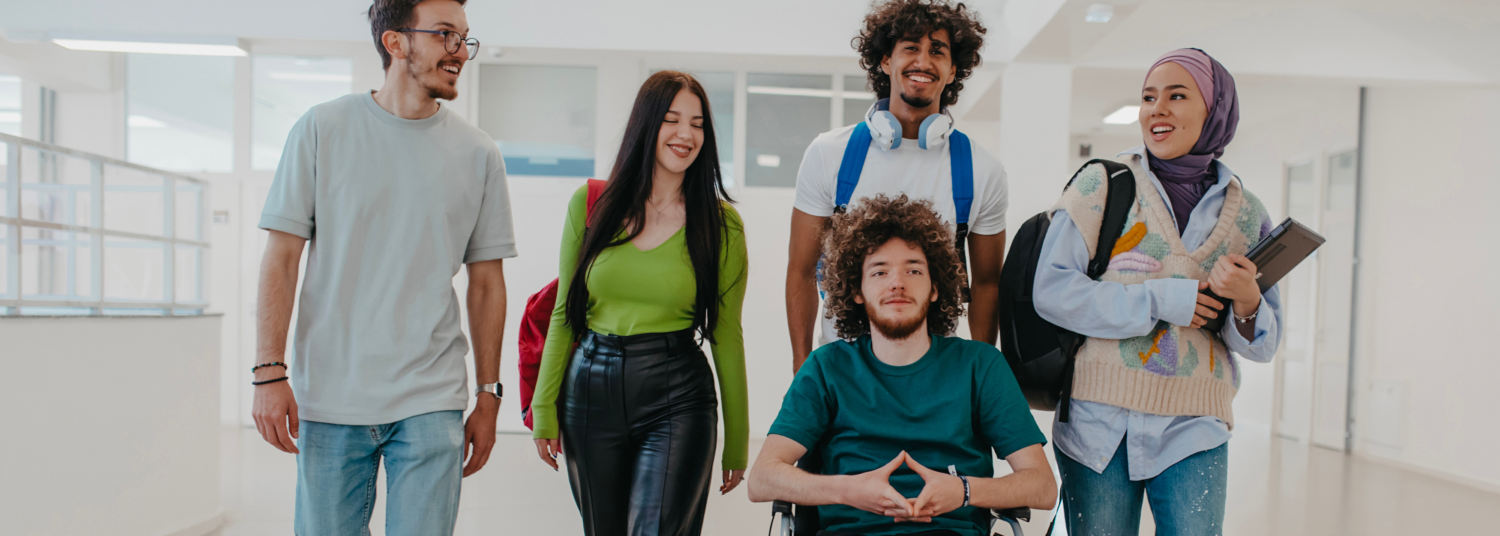Most people can think of a sports star, actor, politician, teacher, or even family member that they looked up to as they grew up. Role models of all kinds are an important part of everyone’s life. For deaf people, finding those role models is even more important.
Whether one of the 95% of deaf children born to hearing parents or someone who doesn’t have the opportunity to interact with deaf peers, deaf youth can often feel isolated and alone, an issue that we have seen increase during the pandemic. Deaf people also often experience barriers such as negative attitudes, prejudice, and reduced accessibility in school and work environments.
That’s why deaf role models matter so much — they offer support from a place of shared understanding and life experience. With deaf role models, deaf youth are more likely to strengthen socioemotional skills, self-determination, language skills, and explore more options after high school. They can also serve as aspirational goals for deaf youth, who often don’t see people like themselves in certain careers or portrayed in the media.
The very first time I had a deaf student, they said, “You’re my first deaf teacher.” It stopped me in my tracks. I had to suppress my feelings and function like a professor. I wanted the class to hurry up and finish, so then I could break down and cry. At the same time, I wanted to implore that student, “Do you know how lucky you are?”
In this student’s mind, she sees that there are so few deaf faculty out there. There just isn’t representation. In fact, there is under-representation in general – in all career fields. For example, when I share that I have a background in archaeology, students are astounded because so many stories go untold. It does not occur to them that deaf can. We can do things they never considered or even imagined.
Researchers at National Deaf Center on Postsecondary Outcomes (NDC) did a research synthesis that summarized the literature about role models for deaf people, Role Models as Facilitators of Social Capital for Deaf Individuals. This summary showed that having access to role models is critical in the development of deaf people’s social capital. They help provide deaf youth with connections and networks, like getting a job or learning a particular skill or trade.
Finding these connections, however, was made more difficult by the pandemic. That’s why NDC is here to help, with strategies to find this vital resource in our increasingly online world.
Connecting with Role Models Online
Connecting with people, in general, has been difficult due to COVID-19. This has resulted in an increased reliance on technology to get access to information, and people. While fostering role model connections in person is ideal, leveraging available online resources and technology is becoming another viable option to build these connections. There are benefits to incorporating online or virtual resources into role model programming and activities.
For example, through NDC’s EFC | state initiative, the South Carolina team uses a virtual platform to bring deaf role models to deaf students, their families, teachers, and other professionals — combating low expectations and other negative assumptions about deaf people. Once a month, they choose a professional to highlight, with the intention of showcasing the range of people, professions, education, and skills.
Online Resources are Available!
Many videos of deaf role models are online and available for you to use in your program — check out our video library, and additional resources below:
Video Resources:
- Black Deaf Center: Personal Stories
- Council de Manos: Know Your Story
- DawnPress Signs: Deaf Women and Role Models
- Deaf Spotlight Interviews with Deaf Artists (Facebook login required)
- DPAN: Real People
- National Association of the Deaf: Deaf at Work
- Past Preservers Spotlight: Amelia Dall, Archaeologist
- Silent Voice (CA): Deaf Role Models Page
- TED Talks:
- Christine Sun Kim, Artist and TED Fellow
- Haben Girma, Lawyer, Advocate
- Elise Roy, Lawyer, Artist, and Advocate
- Evelyn Glennie, Percussionist
- Keith Nolan, Cadet Private
- Nyle DiMarco, Model and Activist
- Rachel Kolb, Rhodes Scholar
International Representation
- Deaf Action: Deaf role model videos (UK – note: in BSL with captions)
- Portrait Deaf Role Models in Africa: Documentary Videos (note: in different sign languages in Africa with captions)
Text Based Resources
- National Black Deaf Advocates’ spotlight page
- Deaf Unity (UK) monthly posts
NDC is Here to Help
NDC is always available to support students and their families, state leaders, disability services professionals, and anyone engaging with deaf people.
If you would like individualized assistance or additional resources, our help team is here to respond to your questions and support you.








